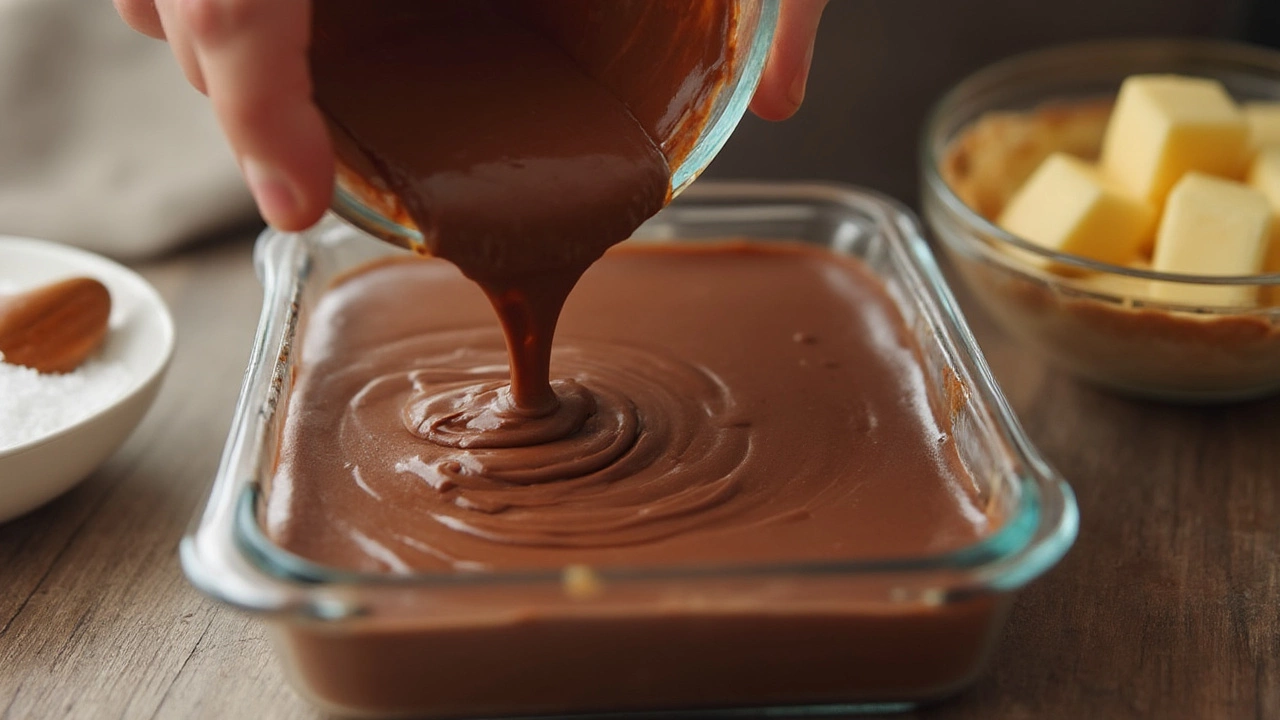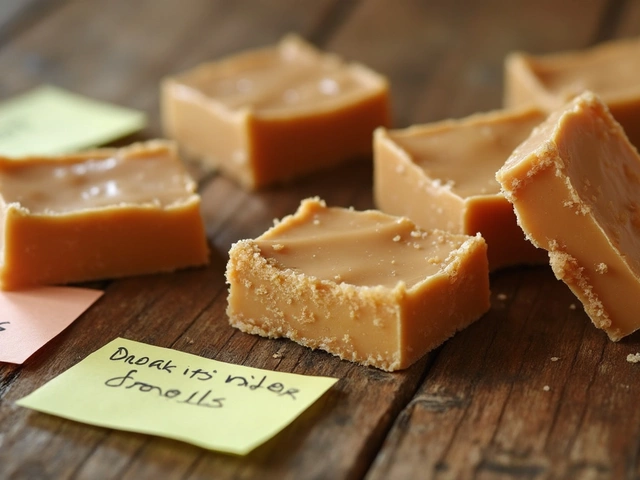Non Grainy Fudge: Simple Steps for Smooth, Creamy Results
If you’ve ever pulled a batch of fudge that turned out gritty, you’re not alone. The good news is that fixing a grainy texture is mostly about controlling heat and timing. Below you’ll find the exact steps that keep your fudge silky, plus quick fixes for when things go off‑track.
Master the Soft‑Ball Stage
The soft‑ball stage is the sweet spot for fudge. Heat your sugar, butter, and milk mixture to 235‑240°F (112‑115°C). Use a candy thermometer – it’s the easiest way to avoid guesswork. If you don’t have one, watch the syrup for a thick, glossy look and a brief boil, then drop a small spoonful into cold water. It should form a soft ball that flattens when pressed.
Altitude matters too. Add 1‑2°F (about 1°C) for every 1,000 feet above sea level. A tiny adjustment prevents the sugar from cooking too hard and turning grainy.
Stir, Cool, and Beat the Right Way
Once you hit the soft‑ball stage, remove the pan and let the mixture cool to about 110°F (43°C). This cooling period is crucial – it lets the sugar crystals form properly. Stir gently with a silicone spatula while it cools; too much agitation will seed crystals early and make the fudge gritty.
When the temperature drops into the 110‑115°F range, beat the fudge with a wooden spoon or electric mixer for 2‑3 minutes. You’ll see it turning from glossy to a matte, thick consistency. That’s when the sugar crystals start to set into a smooth texture.
If you notice a grainy feel while beating, keep mixing a little longer. The crystals often dissolve back into the mix if you give them time.
Quick Fixes for Accidental Graininess
Did your fudge turn out grainy despite following the steps? No panic. Transfer the fudge back to a clean saucepan, add a splash of milk or cream, and re‑heat gently to 115°F (46°C). Stir constantly until the texture smooths out. This re‑melts the crystals and restores creaminess.
Another trick is to add a tablespoon of corn syrup or glucose during the melt. These sugars interfere with crystal formation, helping the fudge stay smooth.
Storage Tips to Keep It Perfect
Store your non‑grainy fudge in an airtight container at room temperature. Avoid the fridge unless you live in a very hot climate – cool air can dry it out and bring back a gritty feel. If you need to keep it longer, wrap each piece in wax paper before sealing the container.
When you’re ready to serve, let the fudge sit at room temperature for 15 minutes. That restores its soft bite and prevents it from feeling hard or crumbly.
Follow these pointers and you’ll say goodbye to grainy fudge forever. Happy cooking, and enjoy that smooth, melt‑in‑your‑mouth texture every single time!

How to Make Fudge That’s Smooth and Not Grainy: Fudge-Making Secrets Revealed
Tired of grainy fudge? Discover the true secret to smooth, creamy fudge every time, with science-backed tips, practical steps, and expert tricks for flawless results.
View More




